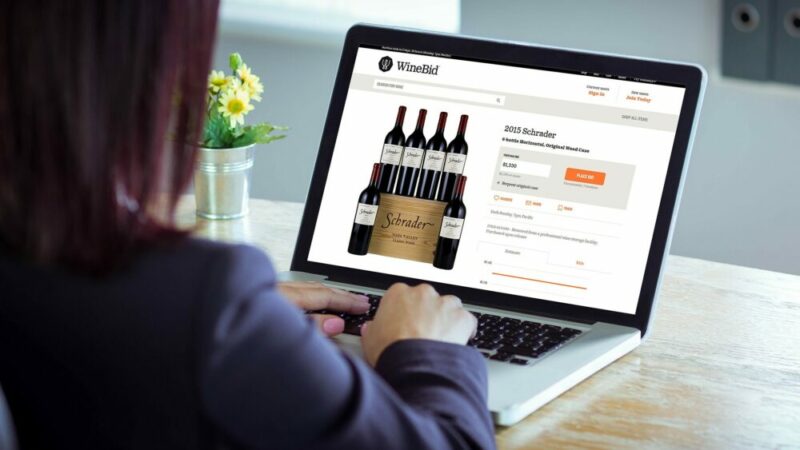Wine consumption in the US has been continuously increasing since the 90s. Up to now, not only in the US but the market in many countries, including the UK, Canada, Germany, Mexico, China, etc., are very developed. Especially when there is the appearance of eCommerce, the sale of wine online has really boomed. Is this the time to find out how to sell wine online?
Starting an online wine shop can be an excellent method to introduce wine to many people. This is a terrific alternative if you own a small wine shop and wish to reach a larger audience or if you’re just starting out selling wine online.
This step-by-step guide will lead you through everything you need to know about how to sell wine online, from obtaining the necessary permissions to starting and marketing your store.
Contents
- 1 How to Sell Wine Online Legally?
- 2 Best Way To Sell Wine Online Legally
- 3 What Is The Cost Of Selling Wine Online?
- 4 Top Best Places to Sell Wine Online
- 5 Selling Wine Online: A Huge Opportunity In 2024
- 6 Conclusion: How To Sell Wine Online
How to Sell Wine Online Legally?
Having a clear understanding of the laws and regulations for selling wine is very important. The permit and license to sell wine online include:
- The Alcohol and Tobacco Tax and Trade Bureau‘s essential permit (TTB): This form is used to keep track of your company’s and tax details, as well as your dealer class and subclass.
- Obtain a state-issued retailer’s license.
- Obtain a state-issued winemaking permit.
- Before online sales, you must register with the TTB.
- Obtain a shipper’s license in each state where you intend to ship. This one illustrates that you are a authorized and endorsed merchant of alcoholic beverages.
- You will also need a Direct-to-Consumer (DTC) assention to ship out of state.
However, the fee you will pay is determined by where you live.
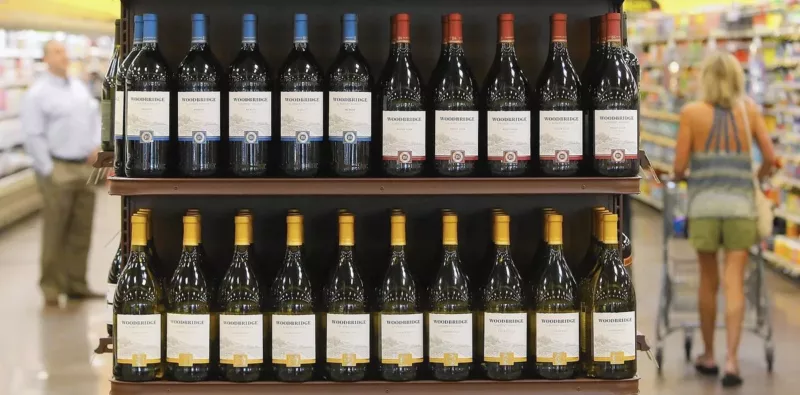
Keep in mind that some states do not accept DtC wine shipments, so you won’t be able to ship to them even if you have the necessary licenses. Furthermore, some states only allow wineries to send directly to consumers and impose maximum alcohol limits.
Retailer shipping is prohibited in more states than it is permitted in others. This is owing to more stringent wine and alcohol restrictions that straddle state lines.
People in 42 states, on the other hand, can obtain DtC shipping permits. As a result, receiving wine straight from wineries is more convenient. Besides, California, New Mexico, and Idaho have reciprocal shipping arrangements. This implies that if another state enables their retailer to ship DtC, so would these states.
We’ll go through how to sell wine online legally in greater detail in the next part.
Best Way To Sell Wine Online Legally
Step 1: Choose Your Niche
Wine is a multifaceted product. Thus, you have a wide range of specialty areas to choose from while selling wine online.
It’s critical to find your niche in the guide on how to sell wine online because it helps you to:
- Develop your knowledge in your areas of expertise regularly.
- Understand who you’re trying to reach.
- Make a brand that speaks directly to your target market.
- Focus your sales and marketing strategy on those interested in the wine you’ll be selling.
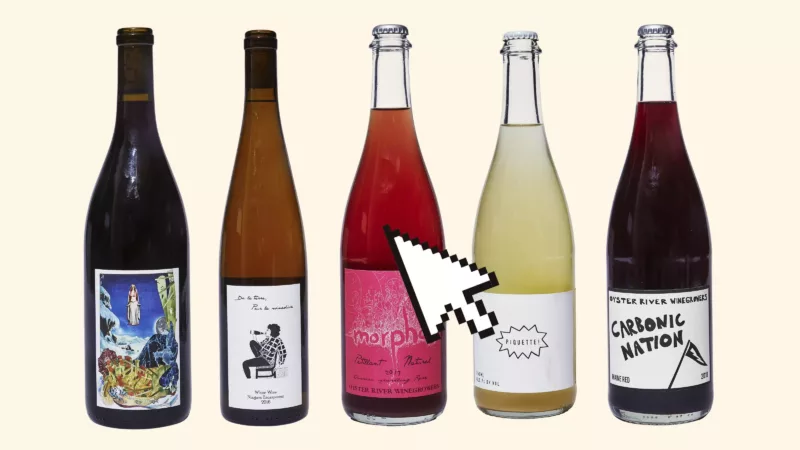
It’s also crucial to understand customer types since you’ll need to know how to market to each of them. Do you want to target individual customers, wholesale or restaurant and hotel chains?
Opportunity, there are endless niches to pick from. Here are a few ideas of areas you could concentrate on:
- Grape cultivars (e.g., Malbec, Merlot, Chardonnay).
- Wines from the region (e.g., California, Bordeaux, Sicily).
- Wines under $20, wines over $200, and so on.
- The customer’s motivation (e.g., casual drinkers, food pairing, investments).
Plus, in many US & EU countries (especially the UK), sparkling wine is becoming more popular. According to an Industry Research report, the Sparkling Wine market grew from USD million to USD million from 2017 to 2023. This market’s Compound Annual Growth Rate CAGR is estimated to reach USD million in 2032.
In general, it may take some effort and investigation to find your niche. Before choosing the wines to sell, do some research into the market to see what’s hot, interview potential consumers to learn about their goals and motivations, and look at what others sell vintage wine online dealers in the area do.
Step 2: Source a Supplier
You’ll need to get products from a supplier if you’re not selling your produced wine. A wine négotiant, a French wine trader, supplies wine to many restaurants and merchants.
Wholesale wine distributors are another excellent source of low-cost wine for company owners. Finding the appropriate stock provider might make the difference between a lot of stress and a smooth-running, profitable business. So, when looking for a provider, consider the following:
- Is the vendor dependable?
- What kind of wine choices do they have?
- What are their prices, and how much profit will I make?
- How quickly can they get stock to you?
- Do they provide any additional assistance or advice to their customers?
Is it simple to cope with them?
Finding answers to these issues isn’t always straightforward, and you may need to think outside of the box at times.
For example, one option to receive these answers is to approach another wine merchant and ask for guidance – just make sure this company isn’t in direct rivalry with you. Even if you offer a fee to other wine merchants for their recommendations, getting a good one will save you effort and money in the long run.
Read More: How to Sell on Shopify: 10 Complete Steps for Beginners
Step 3: Build Your Brand
Wine is a market with much potential, but there are currently a lot of wine merchants, so you’ll need to stand out. When buyers can readily peruse hundreds of wine labels at the grocery store, having an outstanding product is no longer enough. So, how to sell wine online?
One or more distinguishing traits should be present in your wine case. The flavor is crucial, but so is the value you use for your eCommerce store. Some clients will choose a wine based on how appealing the bottle or packaging is.
Although the term ‘brand’ is commonly connected with your company’s logo and website, it has a far broader scope. Your brand is, in essence, how your customers see you and the sum of everything you do, from the colors you use in your marketing materials to how you treat clients who seek guidance.
You’ll need to consider what your company stands for when choosing to portray your brand. A company selling low-cost bottles, for example, will wish to be distinguished from one selling rare, high-end wine.
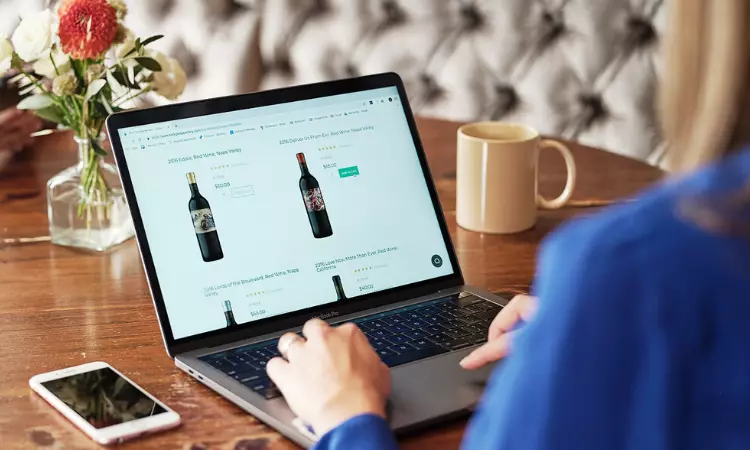
Begin by defining your brand’s core beliefs. Several things determine the value of a wine. Fine wine’s worth is always a blend of its intrinsic and real value. All of these factors – wine’s origin, life cycle, and storage – may be summed up in one word: provenance.
Because serious wine collectors place a premium on provenance, an excellent wine that possesses several of these characteristics will be a highly desirable bet.
Step 4: Create An Wine Online Selling Store
eCommerce Platform
When it comes to setting up an sell vintage wine online store, you have two options:
1. Manually create a website.
2. Use an eCommerce platform to build your website.
While custom builds provide more flexibility, they are much more expensive and time-consuming than using an eCommerce platform. Furthermore, many eCommerce platforms allow you to customize your online store to the point that it’s improbable that you won’t be able to accomplish the results you desire. See the difference between building your own website and using the popular eCommerce platform nowadays – Shopify.
Shopify is one of the most popular eCommerce platforms on the market these days, with many valuable features. Shopify stands apart with advantages like boundless scalability, a vast theme library, various powerful apps, and excellent customer service. Start your business with only 1$ for the first month. Sign up today and see how Shopify can transform your business! Try Shopify Now!
Alternatively, if you are oriented towards the dropshipping model, Oberlo is also an option. Oberlo is a dropshipping software solution appropriate for small and medium businesses to large corporations in terms of capability and pricing.
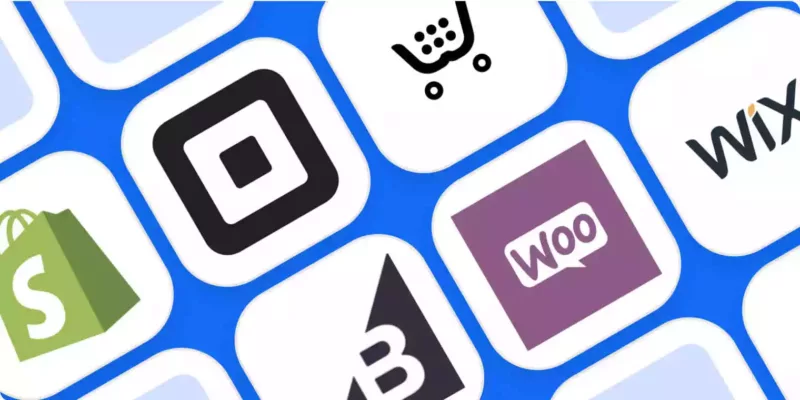
Read More: 20+ Best Things to Sell on Etsy to Make Money
Product Images & Product Description
In addition, it’s critical to accompany each of the wines you’re promoting with attractive photographs and product descriptions.
Unlike conventional wine stores, where clients may come in, assess bottles, and inquire questions, your clients will depend fundamentally on the item data you give to make a acquiring choice when it comes to online wine deals. That’s why we included this portion in how to offer wine online.
- Images of the Products: Make sure you capture product photographs that accurately reflect the bottle’s aesthetic. The use of an essential background and enough white space will aid in the definition of crucial characteristics. To offer inspiration, you might also wish to incorporate product photographs in settings for context, such as bottles on a table next to some delectable-looking food.
- Description of the Product: Customers should get a sense of how the wine will taste by reading the product description. This can be accomplished by including tasting notes, but you can also use the product description to provide advice, such as pairing the wine with certain foods.
Furthermore, while stunning product photographs and well-written text are essential, they are only the beginning—there is much more to consider when developing a great product page.
Check out How To Optimize Your Product Page For Better Conversions.
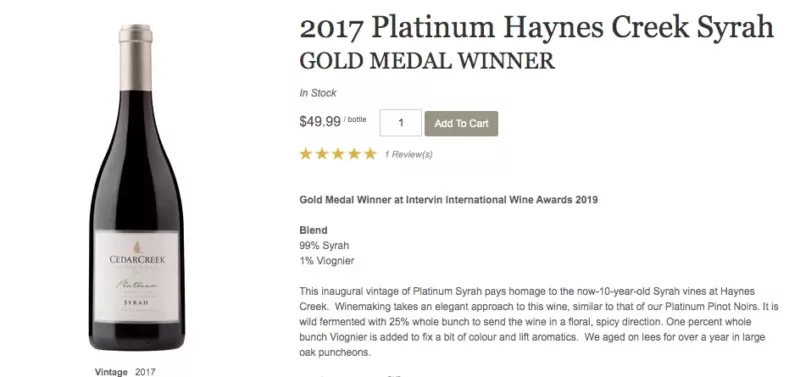
Payment Options for Selling Wine Online
Identity theft and fraud are two issues that shoppers are concerned about. How do you quickly develop trust? You just need to add payment providers that customers are acquainted with, such as Amazon Pay or PayPal Checkout. These search engines are widely used on the internet. Learning how to construct a wine eCommerce website correctly entails learning how to earn your client’s trust.
Step 5: Package And Shipment
Because wine bottles are both fragile and heavy, it’s critical to think about how you’ll package and send your wine to customers—for example, broken bottles, burned bridges, and a high cost result from improper wine packaging.
To keep your wine bottles secure, you can purchase packaging designed exclusively for shipping wine bottles. You can additionally indicate if the box contains fragile items so that the courier treats them with care.
When it comes to shipping, you should look into which courier firms serve your area and deliver wine. Some couriers, such as UPS and FedEx, may have special restrictions that you must follow when sending wine, so it’s worth looking into their standards to ensure that you can satisfy their criteria.
Following that, expanding your online sales to encompass the worldwide wine industry might help you develop your business and generate more cash.

However, there are a few things to think about before going down that path:
1. Verify that the product can be shipped. While you may be familiar with package restrictions for domestic shipments, weight and size limits for international shipments often vary depending on the destination. As a result, you must ensure that you know the specific shipping rules for each country to which you need to ship.
2. Make your packages. Your overseas shipments will pass through many processing locations and be transported in various vehicles. This means that you must be particularly cautious when cross-border packaging shipments to limit the chance of damage.
3. Familiarize yourself with customs documentation. To export wine, you must complete several certifications and documentation (Visit the TTB website to learn more!)
Step 6: Invest In Marketing to Boost Your Online Wine Sales
Without an eCommerce marketing strategy, your company will not last long. Every company is distinct, so you’ll need to take a different or better approach than your competitors (ideally both).
Marketing has the advantage of being adaptable to your budget and timeframe. If possible, use a blend of paid and free marketing strategies.
For example:
- The Internet and Social Media: Creating social media profiles and posting high-quality material on sites like Facebook and Instagram is a fantastic, cost-free method to market your online wine store. The type of material you share will be determined by your brand, values, and what your target audience enjoys.
- SEO: Numerous approaches and techniques may be used to improve your SEO. If you don’t want to become too technical, stick to the following guidelines: Helpful post, high-quality information – Update and add new content to your website regularly – Make sure your website is easy to navigate and loads quickly.
- Paid Promotion: You can decide to invest in paid advertising if you need a speedy bump in high-value visitors to your website. Paid online ads come in many forms, but social network ads and search engine ads are the most common.
- Marketing via Email: Email marketing is an excellent technique to keep your company in your customers’ minds. Create an email list and send out regular updates that span everything from special offers to wine trivia.
Step 7: Start Building A Network

The last step in how to sell wine online is to start building a network. People need to know about your business for it to get traction.
Buyers today tend to buy from recommendations of their circle of acquaintances and the people who influence them. Thus, you’ll be able to get genuine traction for your company if you build business ties that can reach each of these areas.
You should create at least three different types of networks:
- Customers and leads: Individuals who are enthusiastic about your company are the ones who will drive engagement and sales. Customer satisfaction and producing value should be a major priority of your weekly job.
- Partnerships and those you have the power to influence: Offering complimentary products to buyers is an excellent approach to introduce clients from both audiences to one another’s businesses.
- Influencers who can advocate for your company: Influencer marketing is becoming increasingly popular in the corporate world and for a good reason. Some People are more likely to buy from people they like because they trust them.
Check out How To Use Influencers Effectively.
The networks you’ve developed will eventually become passive sales engines for your company. People who enjoy a product are compelled to tell others about it, spreading the word to new people. In a few weeks, a lead could become a customer. This is made possible by giving users simple methods to interact with your products.
What Is The Cost Of Selling Wine Online?
The beginning costs of selling wine online vary depending on the eCommerce platform you use and whether or not you already have wine to sell. Your expenses could range from $1,000 and $15,000.
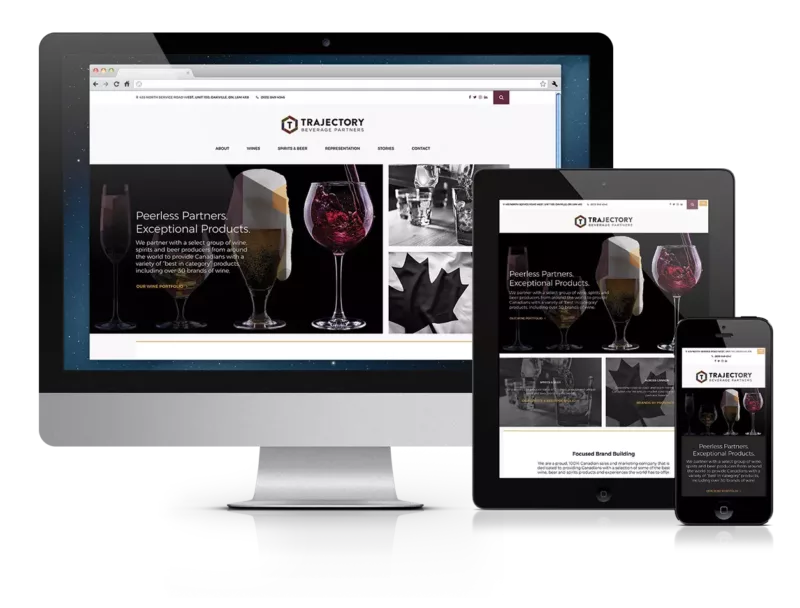
Wine store opening prices will likely be higher than for other essential items because of additional costs such as permits, shipping, and so on.
👉 You can check out more detailed pricing HERE.
Top Best Places to Sell Wine Online
Where to sell wine online? If you are looking for some of the best places for selling wine online, here is the list of our recommendations:
1. Drizly
2. Vivino
3. Bid for Wine
4. Vinfolio
5. Catawiki
Selling Wine Online: A Huge Opportunity In 2024
The massive increase in online wine purchases in several markets over the last year presents the global wine sector with an unprecedented growth opportunity. Back in this Covid-19 pandemic, it’s now commonly accepted that wine eCommerce has experienced a massive boost since the start of 2020.
Where to sell wine online? According to the Global Wine E-commerce report, wine eCommerce has grown in popularity in several markets. Its user base has shifted from the 10-20% of engaged, discovery-oriented wine drinkers to the 40-50% of the population who enjoy wine and buy it regularly but aren’t constantly bothered by all the intellectual baggage that comes with it.
The most notable statistic in the data for 2021 is valued, with average bottle prices up 10%. In addition, the total amount of wines supplied by DtC has increased by 1.9% over 2020 figures. According to the research, sparkling wines were a huge winner in volume shipped, accounting for about 4% of the market so far this year, with rises in both volumes (30%) and value (41%).
Discover more: Best Products to Sell on Shopify: List of 14+ Profitable and Trending Products
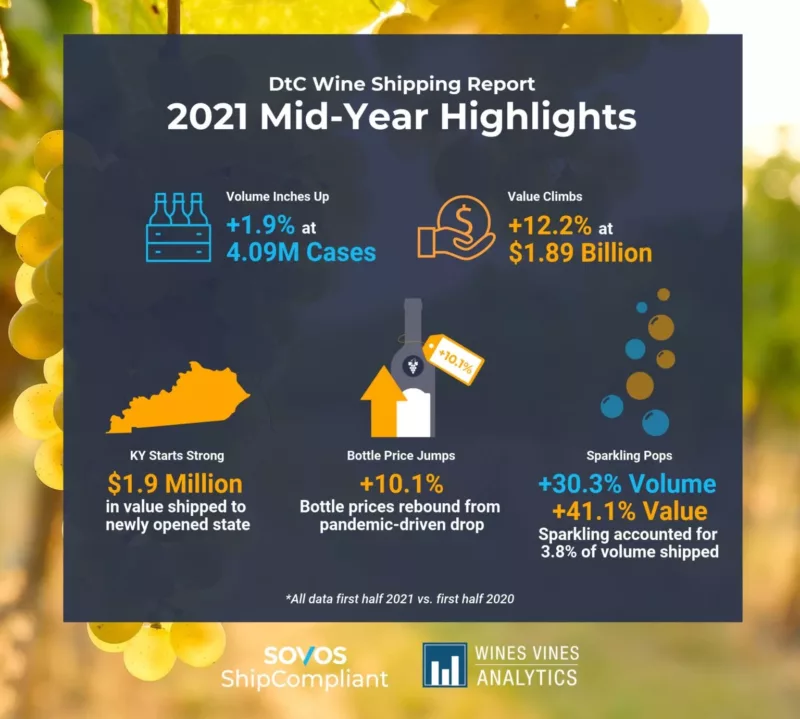
According to Rabobank, wine eCommerce sales reached $6 billion in 2021, witnessing an increase of 131% compared to 2020. And the online revenue of the wine market reached more than 261 billion USD in 2022 and this number is expected to grow at 10.51% annually from 2022 to 2025.

As a result, numerous producers have seen the potential to offer wine online and utilize this dispersion channel.
It’s time for you to capture the benefits of selling wine online!
Indeed, one of the most significant advantages of selling on the Internet is the potential to reach a considerably larger audience. Not only that, but wine eCommerce may also assist businesses in increasing consumer loyalty.
Traditional marketing methods, including television advertisements, print ads, and on-site events, severely limit the number of wine drinkers you can reach. For the most part, local consumers are the only individuals you can get.
Furthermore, eCommerce software allows wine merchants to collect information about their customers, which they may use to generate hyper-targeted, personalized emails and adverts across different web channels. And individualized marketing is far more likely than generic material to attract new clients.
Conclusion: How To Sell Wine Online
One of the most flexible and predictable eCommerce business strategies is starting an online wine business. The industry’s tremendous demand creates plenty of opportunities while also selling new products attractively.
Concentrate on your target audience and the types of wines they prefer. This will allow you to stay competitive in a crowded market and identify new chances before they become widely known. When it comes to selling wine online, there is no one-size-fits-all solution. Since there are many variables at every step of the process doesn’t rule out the possibility of breaking into the wine eCommerce market.
Your work is only about conducting comprehensive research and using the instructions in this article.
Use the checklist below to ensure you’ve covered everything:
- Do you complete the necessary paperwork?
- Which market will you focus on?
- What will the appearance and feel of your brand be?
- Which eCommerce platform are you going to use?
- What are your pricing plans for your wine?
- What method will you use to package and send your wine?
- How will you promote your store?
How to sell wine online? It will no longer be a problem after reading this article! Selling wine online opens doors to a vast market of wine enthusiasts and collectors. By utilizing the top marketplaces, implementing effective strategies, and maintaining transparency, you can successfully navigate this rewarding endeavor.
🎯 For more interesting things about running an online business, please visit HERE.

